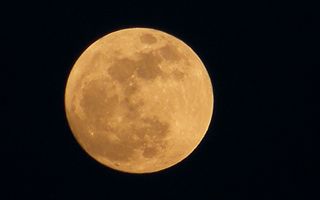(Finance) – Innovative systems based on the action of bacteria and insects to transform waste produced by astronauts in fertilizers to grow microgreens useful as fresh food on long-duration space missions. This is what theAENEAS in the context of ReBUS projectfinanced byItalian Space Agency (ASI), in which Cnr, Istituto Superiore di Sanità (ISS), Thales Alenia Space Italia, Kayser Italia, Telespazio and the Universities of Tor Vergata, Pavia and Federico II of Naples also participate, the latter in the role of leader.
These are real space techno-ecosystems capable of ensuring the optimal recycling of resources, allowing for increasingly autonomous management supplies from the earth. This goal requires the application of safe and efficient solutions for a spatial circular bioeconomy that includes the production of plants, fertilized using in situ resources obtained through the recycling of organic waste. The purpose is to guarantee the constant production of fresh food for astronauts and at the same time reduce waste and the costs of its disposal.
“The new race for space exploration, undertaken by the main international space agencies and private companies, is developed through the ARTEMIS program coordinated by NASA, which involves the construction of bases on the moon, whose supply cannot be constantly ensured from the ground like on the International Space Station,” he explains Angel Wish of the ENEA Biotechnology Laboratory. “In this context, waste becomes a fundamental resource to be recovered and recycled, through the creation of bioregenerative life support systems in space, the so-called BLSS (Bioregenerative Life Support Systems)”.
In addition to the interaction between humans and plants, in systems bioregenerative it is also necessary to introduce degrading organisms, in order to create a virtuous circle in which each biological component uses the waste products of the metabolism of the others as a resource.
Based on data NASA relating to the waste produced during missions on the International Space Station, ENEA has created mixtures composed of food residues, cellulose wipes, inedible parts of vegetable production (such as roots, leaves and stems) and also human urine, and has subjected them to processes of bioconversion through two categories of organisms degraders: bacteria that work in anaerobic conditions and larvae of the soldier fly (Hermetia illucens), a species of dipteran also used in terrestrial composting plants.
After having characterized specific consortia bacterial able to digest organic matter and reduce it into molecules that can be used by plants as nourishment, ENEA has analysed the products of digestion and tested them in microgreens cultivation experiments, demonstrating their potential for use as fertilizer. The same waste mix it was then used to develop degradation methods with soldier fly larvae, a species particularly suitable for space applications thanks to its limited tendency to fly, the efficiency and speed in the bioconversion process and the ability to degrade heterogeneous and complex matrices .
ENEA researchers studied the degradation in terms of process efficiency and of effects on the insect’s life cycleallowing us to identify optimal conditions for waste transformation and effectiveness on plant growth.
“There purpose of our research is to develop sustainable, complete and functional systems for the regeneration of food resources in the space environment”, explains Angiola Desiderio. “But the principle of sustainability – she concludes – is certainly also of interest for the relapses on earth where the optimization of the use of resources is becoming a problem that requires adequate solutions, according to criteria bioeconomy circular. I am referring, in particular, to places where plant production is limited by soils poor in fertilizing components, such as hot or cold desert areas, or where environmental conditions (extreme temperatures, environmental contamination, war contexts) force cultivation in artificial environments in which available resources can be effectively recycled”.
